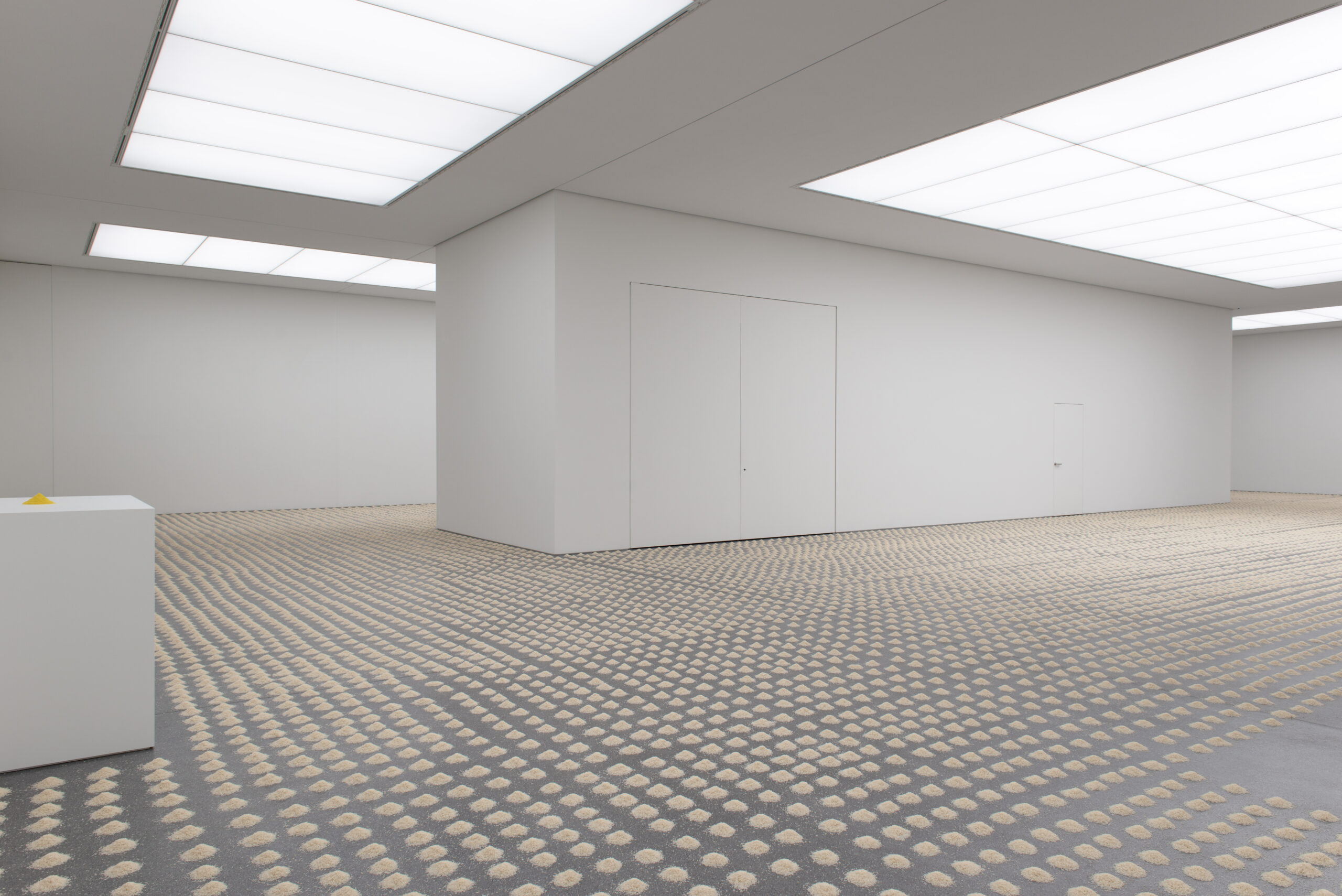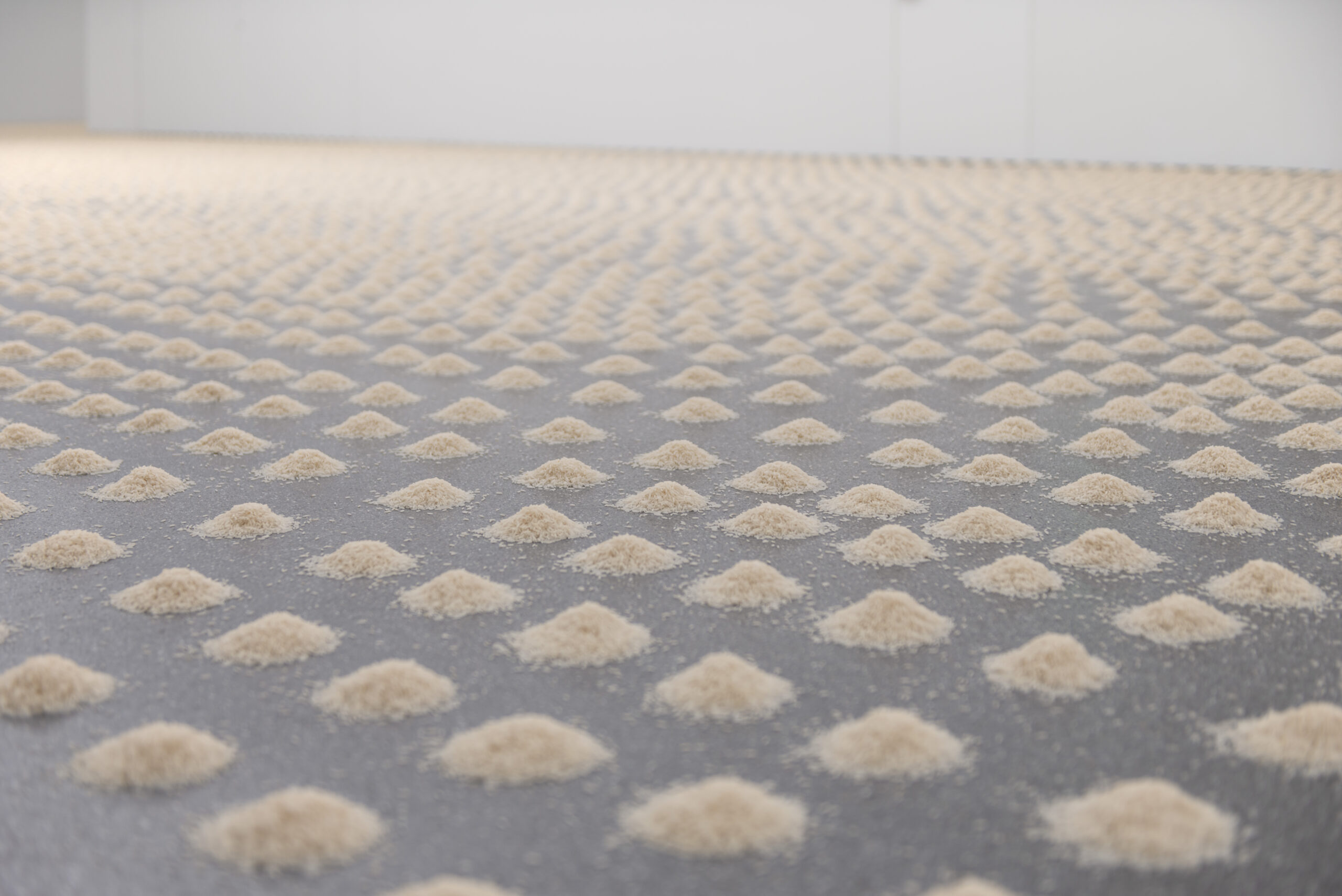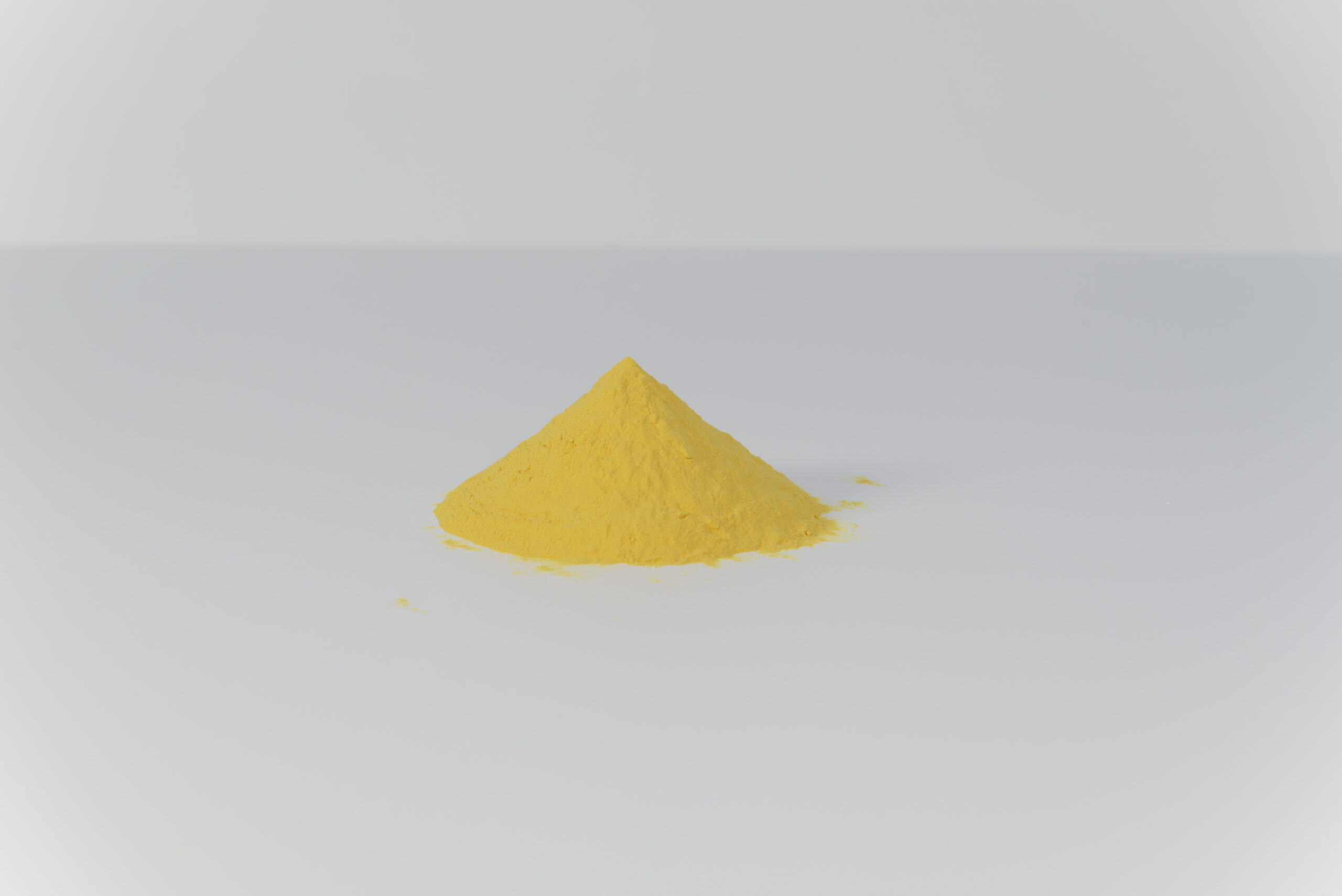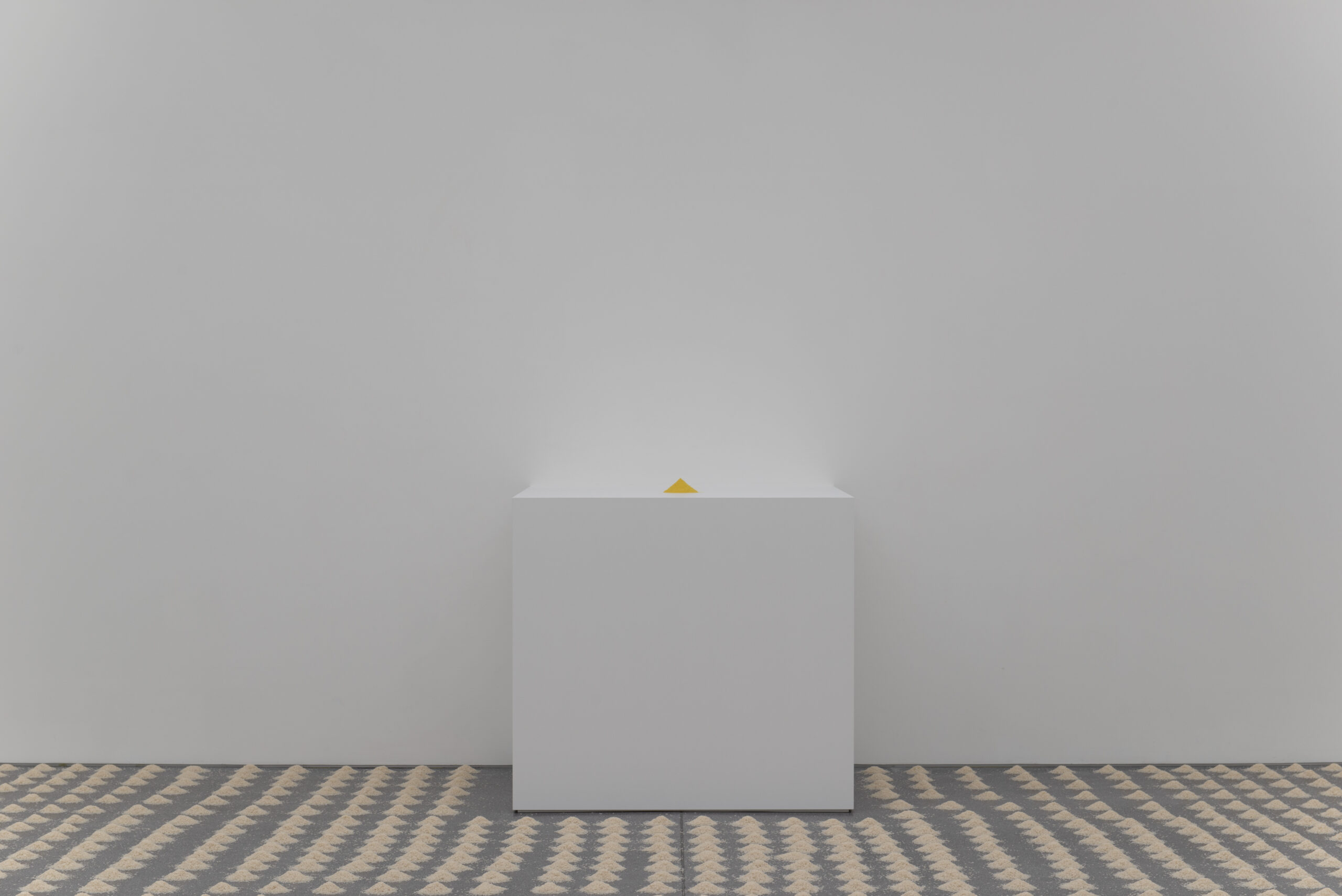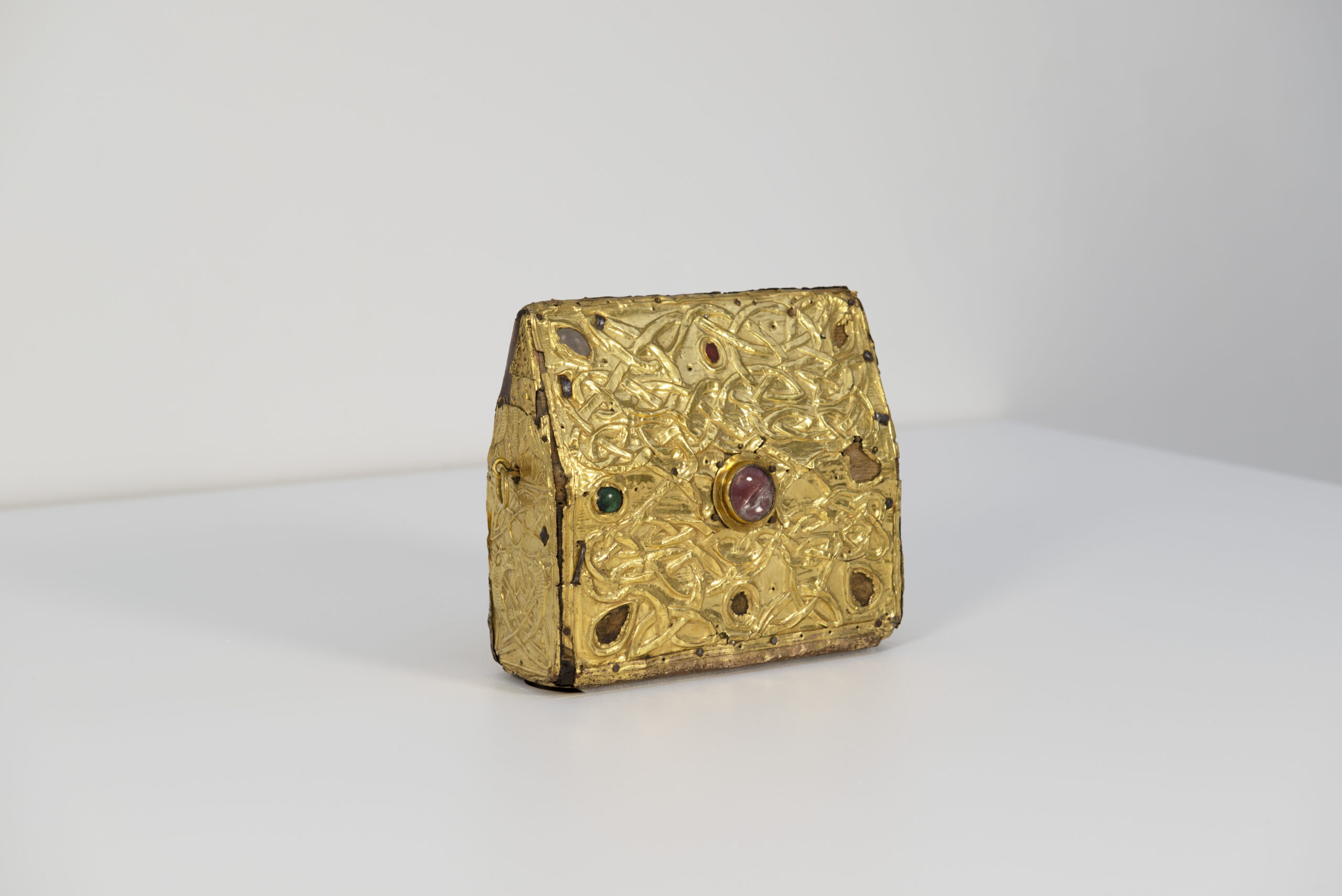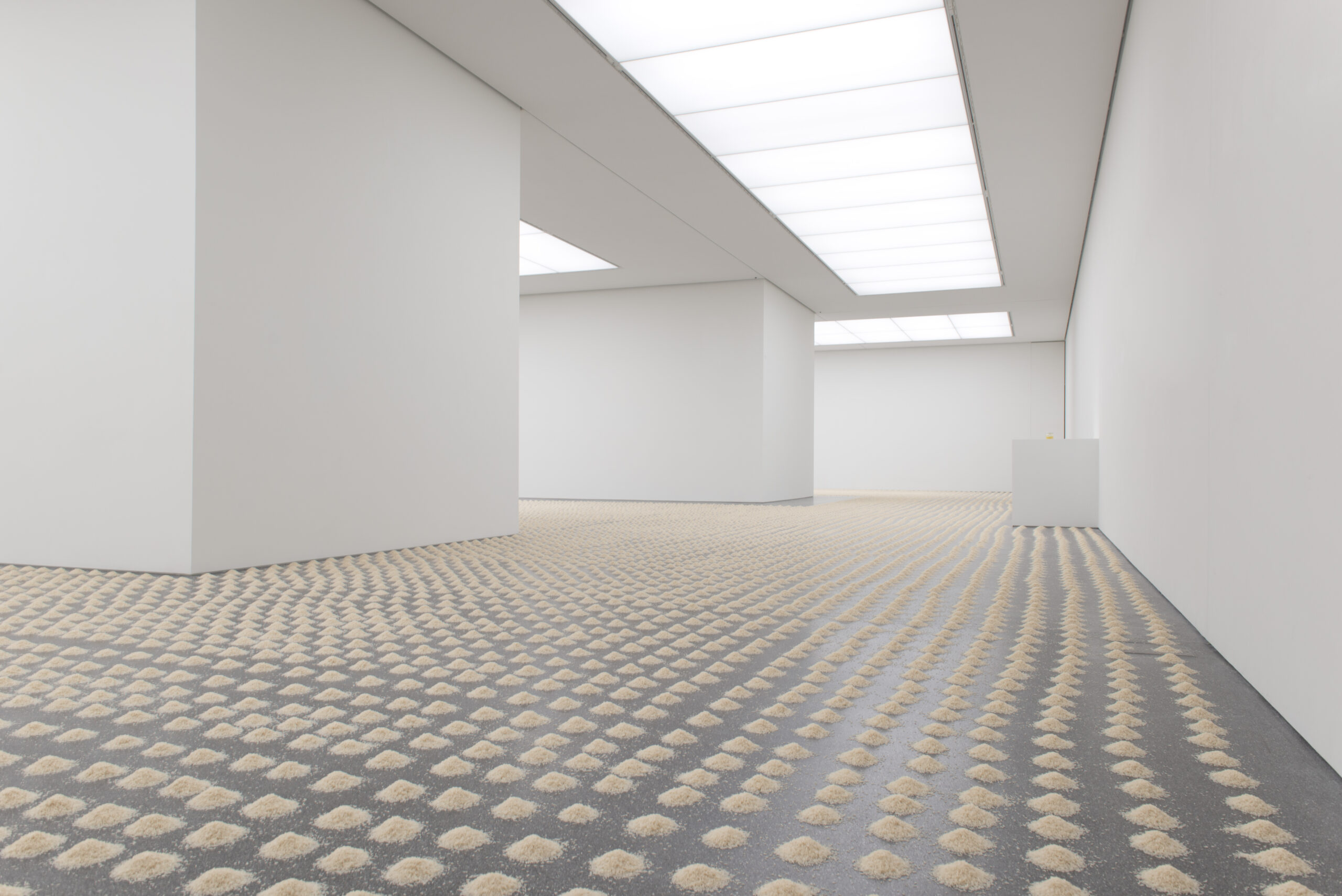Wolfgang Laib. Crossing the River
Exhibition from March 19 to July 31 2022
Curated by Damian Jurt
(e) Wolfgang Laib (*1950, D) is considered to be one of the most important artists of today. His work is characterised by a profound relationship with nature and a declared belief in simplicity. At the same time eastern philosophies from India have shaped his life and his artistic practice since the 1970s. Until today the artist concentrates on just a few cyclical groups of work. Ever since his journeys to India as a young man the idea inspired him to see humans as part of a largerwhole. He also follows this way of life in his art. Thereby the artist tracks down the universal, the eternal and works with natural materials such as pollen, rice, milk or bees wax. However, he also finds this holistic understanding in our culture. In the juxtaposition between a small mound of colour-intensive pollen and a eucharist casket Wolfgang Laib creates an astonishing relationship. The presentation is in a laid-out field of thousands of rice mounds. As an important foodstuff rice symbolises vitality and is fundamental for our earthly existence. With the temporary installation the artist manifests the spiritual dimension of art and leads us directly to the source of his poetics.
(g) Wolfgang Laib (*1950, D) gilt als einer der bedeutendsten Künstler der Gegenwart. Sein Schaffen zeichnet sich durch eine tiefe Beziehung zur Natur und einem Bekenntnis zur Einfachheit aus. Dabei prägen östliche Philosophien aus Indien sein Leben und seine künstlerische Praxis seit den 1970er Jahren. Der Künstler konzentriert sich bis heute auf wenige zyklische Werkgruppen. Seit seinen Reisen nach Indien als junger Mann inspirierte ihn die Idee, den Menschen als Teil eines grossen Ganzen zu sehen. Dieser Lebensweise folgt er auch in seiner Kunst. Der Künstler ist dabei dem Universellen, dem Zeitlosen auf der Spur und arbeitet mit natürlichen Materialien wie Pollen, Reis, Milch oder Bienenwachs. Er findet dieses ganzheitliche Verständnis aber auch in unserer Kultur. In der Gegenüberstellung von einem kleinen Berg aus farbintensivem Blütenstaub und einem Eucharistiekästchen gestaltet Wolfgang Laib eine verblüffende Beziehung. Die Präsentation steht in einem ausgelegten Feld aus tausenden Reisbergen. Als wichtiges Nahrungsmittel symbolisiert Reis Vitalität und ist grundlegend für das irdische Leben. Mit der temporären Installation offenbart der Künstler die spirituelle Dimension der Kunst und führt uns direkt zu den Quellen seiner Poetik.
